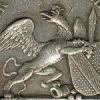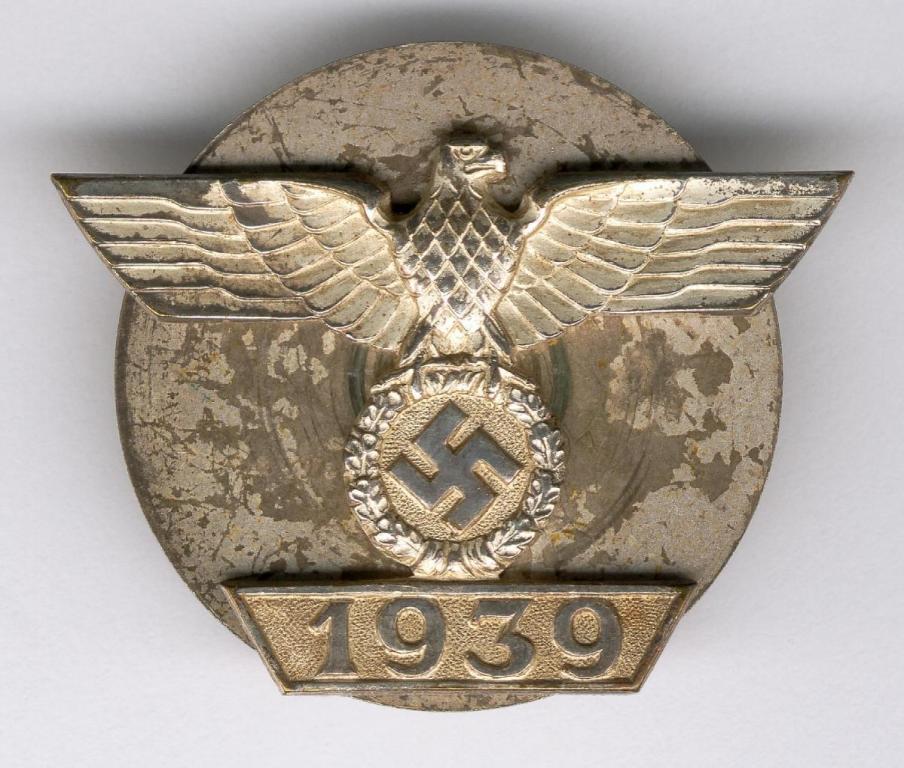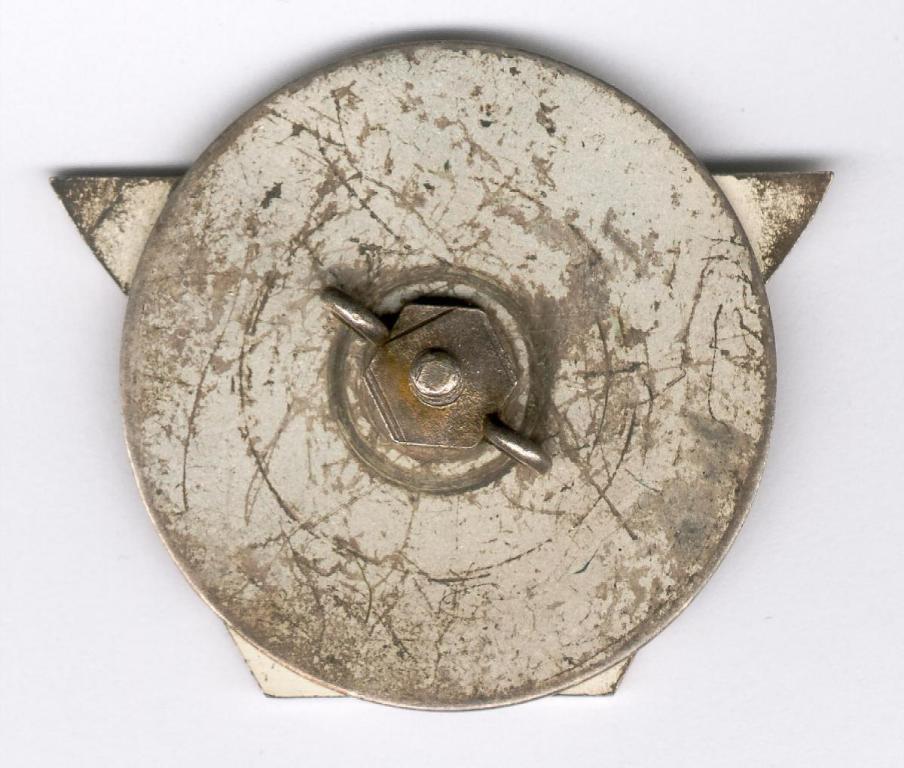-
Posts
3,086 -
Joined
-
Days Won
14
Content Type
Profiles
Forums
Blogs
Gallery
Events
Store
Everything posted by saschaw
-

EK1 1914 non magnetic ?genuine or fake
saschaw replied to Aardvarkblue's topic in Germany: All Eras: The Iron Cross
I cannot identify the maker, but nonetheless, this is an authentic, inter-war era private purchase cross, probably from the early to mid 1930s. Very similar crosses are shown on our friend 5tefan's site ek1-dna.de, described as "Unknown Maker (Associated with Otto Schickle)". See here for reference. How that, please? If the seller cannot or doesn't want to attribute this cross to a certain maker, this has no influence on his reputation and it doesn't take anything away from the cross. I sometimes really don't get how fixated we're on the "maker thing" - often not sourced, and sometimes just wrong! This is not the main thing about authentic, historical awards, if you ask me. But I really don't want to argue... -

WW1 EK2 maker hallmark identify
saschaw replied to Nihil Sine Deo's topic in Germany: All Eras: The Iron Cross
Oh, I might have to point out the Wernitz book does not necessarily attribute this exakt type cross to Gebr. Friedländer, but it has a ton of information on the historical background, on contracts with official suppliers and on so much more, and thus is the foundation of my remark. This work can only be recommended, unless you're into all the private purchase variations of the inter-war era, because it only shows a tiny glimpse of those. Plus, in case you don't know, the book was additionally published in English as well, which might suit you better than German! -

WW1 EK2 maker hallmark identify
saschaw replied to Nihil Sine Deo's topic in Germany: All Eras: The Iron Cross
I agree with that mentioned "someone": This seems to be the "Fr." mark used by Hofjuweliere Gebrüder Friedländer, Berlin. The "non-magnetic frame", by the way, is real silver, usually 800/000, despite not being marked such. See Frank Wernitz, Das Eiserne Kreuz 1813 – 1870 – 1914. Geschichte und Bedeutung einer Auszeichnung. Viena, 2013. Volume 1, p. 331–440. -

a beautifull IC2 from Johann Wagner & Son
saschaw replied to BlackcowboyBS's topic in Germany: All Eras: The Iron Cross
That's a beautiful, high quality cross with the mark "W&S", which is relatively uncommon! -
I absolutely agree you "had a good show", and like that Reserve or Landwehr officer's bar best. Also, I don't see much wrong with the sewing. Not a Godet made bar, apparently, but other than that good enough for a professional's job I'd say. Not sure where this claim originates from, but to me it seems the two classes were ranked differently right from the beginning. Epstein, p. 6, in his 1906 Die Vorschriften der Deutschen Bundesstaaten über die Trageweise und die Rückgabe der Orden und Ehrenzeichen gives separate precedence for the 2nd and 3rd class, with the 2nd class right behind the orders and in front of all Allgemeines Ehrenzeichen classes, the Dienstauszeichnungskreuz (not mentioned, but apparently the Landwehr-Dienstauszeichnung I. Klasse as well) and the Princely Hohenzollern Ehrenkreuz 2nd or 3rd class. On your bar, the 2nd class medal (and the 3rd class as well, by the way) might still be war time awards, but they do not have to be, and to my understanding, it would not necessarily effect precedence on the bar if they are. Pretty confusing, but Epstein used official sources, and gives tons of weird details...
-
Wow! I love the huge one, but the three place bar with that "70" jubilee button, if that's authentic, must be one of a kind or really, really close to it. However, I'm unfortunately lacking numbers for crosses awarded for service jubilees... Do you have additional information, and has this group been discussed before here or in a fellow German forum? With proper source material, which I don't have, this "simple" trio might even be attributable!
-

WW1 EK2 Any idea on maker?
saschaw replied to Hauptmann's topic in Germany: All Eras: The Iron Cross
From what I know, this cross is probably too generic to be attributed to a certain maker, due to all the core swapping and so on among the official makers of Great War era award type crosses - sorry! I'm not aware this Vienna(!) maker produced contemporary award type crosses. Is this attribution from one of these unsourced online lists? Just doesn't sound plausible and right to me... -
I asked a fellow Oldenburg collector to have a look into this, and he told me "1914 ist kein Robert Esser im Staatshandbuch verzeichnet, zu keiner Ordensklasse. Auch kein Esser allgemein". This leaves us with two possibilities: He received an Oldenburg house and merit order at a later point and the photo was taken afterwards, or it's indeed something else. But if so, what could it be?!
-

EK 1939 EKI Wiederholungsspangen
saschaw replied to Jim R's topic in Germany: All Eras: The Iron Cross
Despite we have already seen several Petz & Lorenz Spangen in this thread, this screw back type is still missing. It appears to be Buntmetall, but in fact, it's entirely made from magnetic steel or iron! I guess this qualifies as a "rare bird"! -
I guess you do know how rare some of these are? For example, your Württemberg medal is the 1848 type! In fact, I have never seen one medal bar that includes this issue, which is odd, given there were more than 2,200 awarded for the „Feldzug in Schleswig-Holstein, denjenigen gegen die badischen Insurgenten, sowie das Gefecht bei Dossenbach“. See Klein, Ulrich and Raff, Albert: Die Württembergischen Medaillen von 1797–1864 (einschließlich der Orden und Ehrenzeichen). Stuttgart 2003. p. 234–236.
-

Iron Cross 2nd class 1870 reduction
saschaw replied to VFMR's topic in Germany: All Eras: The Iron Cross
No sure if I got you wrong (again), but: Do you claim this article refers to authentic 1870 crosses bearing several different makers' markings? I thought I knew Mike's work well, but couldn't find such information. Could you maybe correct what I might have misunderstood here, please?! Thanks, Graf, I'm glad to hear you agree! -
Here's another one, again on the trifold ribbon. I think we can now accept this ribbon as the "official" type, if we want to call something "official" here. You're too kind, thank you! I was sick, possibly with Covid, a few weeks ago, and thus needed a small break. My next update is scheduled for this Friday, and hopefully everything will work this time...
-
Thanks for the clarification, but there was no misunderstanding at all. I'm aware there were many hundreds of 4th class crosses awarded, mainly in the unification wars and in the colonial and oversea conflicts. Here I'd love to promote late Eric C. Ludvigsen's statistic works, that were published posthumous, but unfortunately, they're out of print and seemingly not available anywhere... which is really sad.
-
According to the 1892 Hof- und Staats-Handbuch des Großherzogthums Baden, p. 167, Freiherr von Falkenhausen received the Ritterkreuz I. Klasse mit Schwertern (sic) in 1874. Under the revised 1879 statutes, he did not have to return this cross for a higher grade without swords, and thus it's still listed in the later rank list, alongside his peace time 1st class commander set.
-
No need to argue, Gentlemen. The writing is much younger than the picture, and I have seen mislabeled pictures before. One of my favorite photos titles the Grand Duchess of Baden as "Queen of Karlsruhe" (sic). As long as we won't find another possible suspect for these awards worn on this exact uniform, I'm going with Major Jochmus as well...



